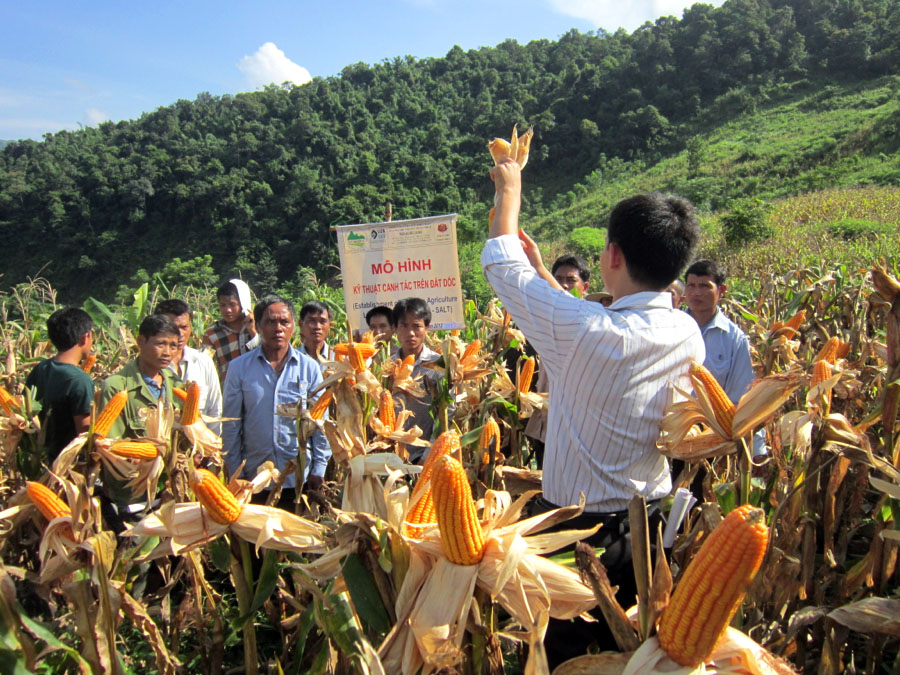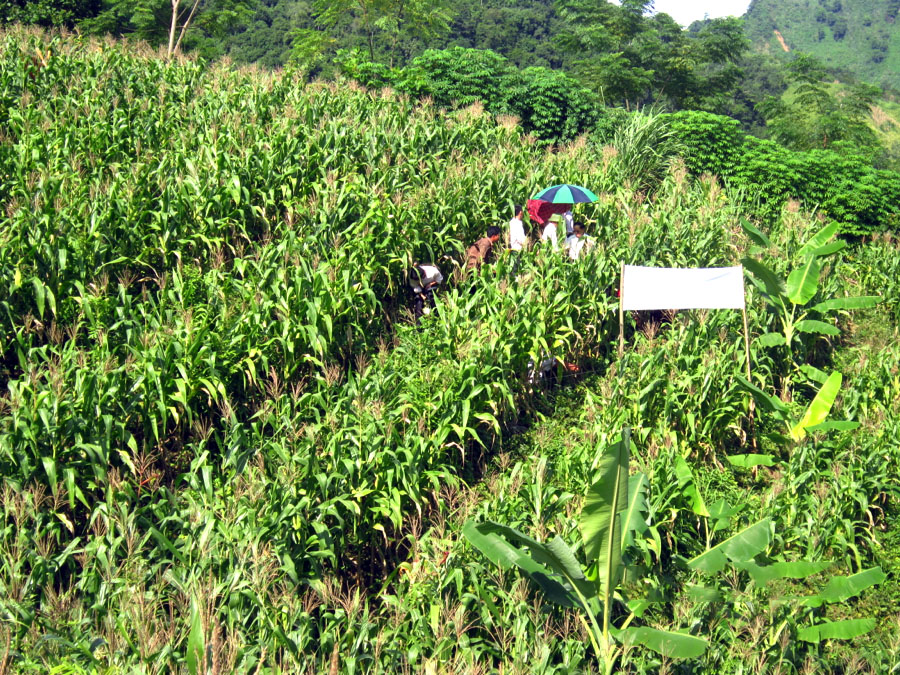Vietnam: Farmers get SALT

For 14 years now Luxembourg has been cooperating with Nghe An Province in Vietnam. The most western and mountainous districts of Con Cuong, Tuong Duong and Ky Son, the latter bordering with Laos, have been at the centre of this rural development programme.
Throughout the years, Luxembourg development cooperation supported local authorities in building small and medium infrastructure (wells, weirs, biogas digesters, water supply, electricity supply, community houses, rural roads, bridges and irrigation schemes) hereby focusing on building agricultural development services’ capacity in order to deliver appropriate services to rural households to fully benefit from the adoption of appropriate and diversified sustainable agricultural practices.
Due to the geological characteristics of these mountainous districts, soil erosion remains a big problem in the project area. The current project (VIE/028) re-introduced Sloping Agriculture Land Technology (SALT) to minimise erosion effects on the arable land. The SALT approach was invented in the Philippines where about 70% of the total land area is characterised by sloping. SALT mainly consists of using leguminous trees to improve the fertility and stability of agricultural soils. It’s a simple low-cost method for upland farming, which was especially developed for small farmers with few tools, little capital and little knowledge of modern agriculture.
Since the first SALT model was mainly developed for soil conservation and fertility improvement, new models were developed with the integration of livestock, fruit trees and the forest. These improved models allowed the farmers to significantly increase their household income by diversifying their crops. In 2013, the VIE/028 project in partnership with the Northern Mountainous Agriculture and Forestry Science Institute implemented a new SALT model called Sustainable Agricultural Land Technology. One-hectare demonstration plots were established in all three districts. The new SALT establishes contour lines by planting fodder grasses and legumes along the hedgerows for livestock. The contouring of slopes also addresses the erosion problem.
The beneficiaries were introduced to SALT techniques such as: seed selection, crop rotation, land preparation methods and intercropping techniques to improve soil fertility, among others. They were provided with seeds and plant protection inputs for different crop varieties (like maize and black beans). After 3-4 months of implementation, the yields increased: maize was about 6 tons/ha, groundnut 1,6 tons/ha, cassava 25-28 tons/ha and upland rice, banana and beans also produced significantly higher outcomes.

To conclude, SALT models have enabled local farmers not only to access adapted and sustainable farming systems, but also new intercropping techniques with short-term cash crops. These interventions will also help to reduce the rate of deforestation together with slash and burn practices but most importantly, it create a surplus to the household incomes of the vulnerable populations (mostly ethnic minorities) in Western Nghe An.
↑ To the top